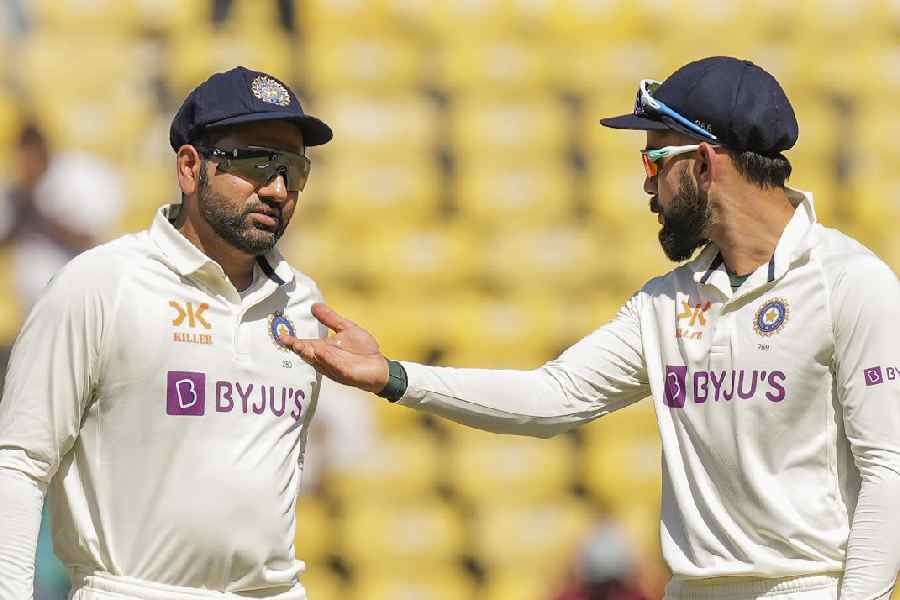In his last Test match as head coach Rahul Dravid had reminded the players about the challenges of the format and what it takes to “have consistency and be able to survive the test of time”.
India’s innings victory in Dharamsala against England opened an eight-point gap at the top in the World Test Championship percentage system with New Zealand. In less than a year, South Africa, who were languishing in seventh spot then, and Australia have confirmed their clash in the WTC final with India slipping to third place.
India’s six-wicket loss in Sydney on Sunday which resulted in their surrendering the Border-Gavaskar Trophy to Australia after a decade demands scrutiny.
Here was a team under Dravid which bounced back after an innings loss in Centurion to draw level the two-match series with a seven-wicket victory in Cape Town. The start to the home engagements against England wasn’t perfect with Rohit Sharma’s men losing the opener in Hyderabad. They turned it around from the next game onwards to win the series 4-1.
The end of Dravid’s tenure and the subsequent loss of form of some of the seniors have spelt disaster for the side. They were also undone by certain debatable selections and the stress on the bits-and-pieces players instead of specialists suited for the format.
The think-tank’s refusal to read the early signs of a breakdown in their ignominious 3-0 loss to New Zealand at home prior to their departure for Australia precipitated this debacle. The rumblings of a lack of synergy in the working of captain Rohit Sharma and head coach Gautam Gambhir also needs to be delved into.
Jasprit Bumrah was left frustrated after missing out ‘on the spiciest wicket of the series’ but the lack of backup options was a telling commentary on the bowling resources. A miracle was needed to defend 162 on what turned out to be the final day of the series.
Ravichandran Ashwin’s impromptu retirement after the second Test in a potential discord with the team management also hurt their chances badly, especially in Melbourne.
Still Bumrah’s brilliance would have been enough had the top-order contributed consistently. Rohit and Virat Kohli were walking wickets with no probable quick fix in sight.
The captain in a brave move opted out in Sydney “because runs were not coming off” the bat but Kohli stayed put in a bizarre manner. He fell poking in the corridor in eight of his nine innings, and barring the century in Perth, there was very little to show.
The constant change in the batting order once Rohit returned for the second Test also affected their rhythm. Yashasvi Jaiswal remained their best bet with 391 runs, second only to Travis Head’s 448. There were flashes of hope in KL Rahul and Nitish Reddy but it was always a struggle for the middle and lower order as the top fumbled.
The way the batting collapsed in the final session in Melbourne was perplexing and the sudden turn of events left Pat Cummins’ men in a vantage position going into the final game.
“A bit (of the batters’ struggle) could be because of the wickets,” Gambhir said on Sunday. “Then, again, it’s not only the case in Australia. We’ve had the same issues at home as well. So I think everything boils down to the temperament...”
However harsh it may sound, the reliance on white-ball cricket for Rohit and Kohli has had a brutal impact on their batting.
It’s pointless to expect them to continue in the new WTC cycle which begins with the England series in July. How the selection committee led by Ajit Agarkar handles this transition process will be interesting since none seem to be keen to pull the curtains down on their careers.
Rohit and Kohli at 37 and 36, respectively, will not continue for long and it will need some self-introspection from both to make way for the youngsters to fit into their roles.
Sometimes aggression has to be backed by performance but India’s new crop of cricketers has lacked the intensity and attitude to balance the two on the field. Perhaps a sense of durability and calmness was needed to bring back sanity into their performance.











